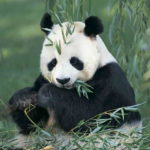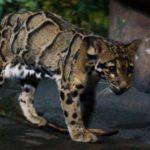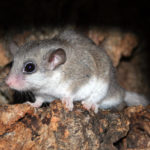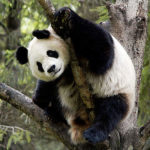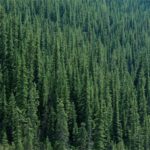Red pandas
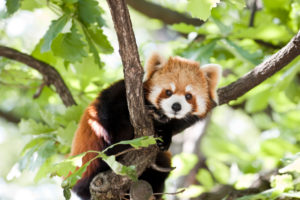 In nature, red pandas are now found only in several Chinese provinces (Sichuan and Yunnan), Nepal, Bhutan, northern Burma, and also in the north-eastern part of India. Their habitat is coniferous forests (mostly fir), which alternate with deciduous tree species: oak, maple, chestnut and others.
In nature, red pandas are now found only in several Chinese provinces (Sichuan and Yunnan), Nepal, Bhutan, northern Burma, and also in the north-eastern part of India. Their habitat is coniferous forests (mostly fir), which alternate with deciduous tree species: oak, maple, chestnut and others.
They are necessary for the growth of bamboo – the main food of a small panda. Such forests can be found at an altitude of 2000-4000 meters above sea level. Most of the year they are shrouded in clouds, which creates favorable conditions for the development of mosses and lichens. And why we mentioned them, you will find out a little later.
Small pandas grow to the size of a large cat, but due to the thick and long fur there seem to be more than there is actually. The length of the body along with the fluffy tail is about 80-120 centimeters, and the average weight is 4-6 kilograms. Short paws are provided with strongly curved claws, which are only partially extended forward, and the feet are covered with a short fur that helps when walking on ice or snow. On the front paws there is an “additional finger”, thanks to which the panda can hold twigs of bamboo while eating. Externally, males are not much different from females.
These animals have a very beautiful color – dark or light red, but not everywhere, but mostly on the back, sides and tail. The tummy, together with its paws, is painted dark brown or even black. On the red tail there are bright rings. The head of the animal is decorated with white patches on the muzzle, on the cheeks, along the edge of the ears and around the eyes.
Such a color nature prepared for this animal is not accidental. Red color performs a protective function and allows a small panda to remain barely visible during rest or sleep among the red lichens, which are strewn with trunks and branches of coniferous trees, in particular fir trees.
In the habitats of these animals, the average air temperature fluctuates around 10-25 degrees and rain or snow always falls. And this means that the fur should keep the heat well. In especially cold periods, in order to keep warm, the panda curls up on branches or in a hollow into a tight tangle and covers its head with its tail, like a blanket.
Most of the time they spend on trees where they feel like a fish in the water. On the ground they go down for food. The most active in the evening, and in the afternoon are more comfortable in the hollows and sleep. A long tail helps them keep balance while they are on trees. Going down to the ground, they keep it straight, not touching the ground.
Each panda, whether male or female, has its own territory, and considerable. In males it is about 5 km2, while in females it is 2 times less. They mark it with special marks: a secret from the anal glands, urine or piles of litter, so that the animals immediately know about which neighbors live next to them.





